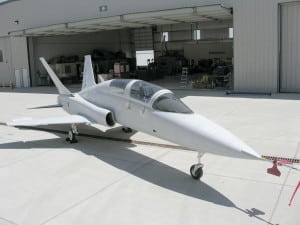
New T-X Entrant. Stavatti Aerospace is entering the Air Force’s T-X trainer competition, according to a company statement. Stavatti will offer its Javelin, a new twin-engine, two-seat, high performance military jet trainer and very light fighter (VLF) aircraft. Derived from the ATG Javelin Mk-30, Stavatti also expects Javelin to be a candidate as a trainer and VLF aircraft to allied forces worldwide. Javelin had its maiden flight in September 2005 after a partnership was created with Israel Aircraft Industries to…

 By
By 











